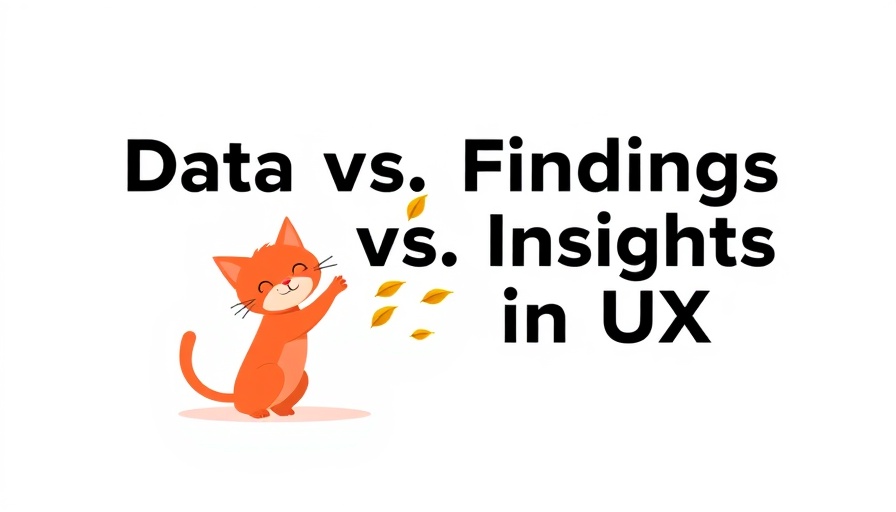
Understanding the Distillation of Data, Findings, and Insights
In the fast-paced digital world, especially in WordPress development and design trends, establishing clarity around the terms we use can make a huge impact on project outcomes. When you hear the terms data, findings, and insights, you might think they are simply interchangeable words thrown around in board meetings and brainstorming sessions. However, they encapsulate distinctly different meanings that are vital for effective user experience (UX) design.
The Foundation: What Makes Data Unique?
Data symbolizes the raw observations—the notes from user interactions, numbers from surveys, and even the logs of website activity. For instance, if six users searched for the phrase “money transfer,” that’s data. But what do these numbers signify on their own? Not much. Without context, data remains a silent observer, waiting to be processed.
Turning Observations into Meaningful Findings
The moment we take a step further, we venture into findings. This is where patterns begin to emerge. For example, if we find that 60% of users experienced difficulties searching for the “money transfer” feature, we can make sense of our data. However, findings alone don’t provide actionable steps; they are merely the observations distilled down into a more digestible form.
Insights: The Game Changer for Decision Making
Here's where the magic happens! When we transform findings into insights, we find a way to connect the dots. An insight elucidates not just what happened but why it might have occurred, opening doors for innovative solutions. In our example, if we recognize that users struggle with navigation because it doesn't align with their mental models, we can recommend redesigning our dashboard. This is where UX designers shine, providing suggestions based on rich understanding rather than mere statistics.
The Importance of Hindsight and Foresight in UX
Understanding historical performance is equally crucial. Hindsights act as our post-analysis reflections, showing us what we learned from previous designs and how users interacted with them. In contrast, foresights provide projections based on insights, guiding future design decisions. Both elements serve as critical tools in building effective UX strategies that resonate with users.
A Real-Life Application: Navigating the Complex Web of Data
Imagine your WordPress site: data might show how many visitors click on your payment options. Findings could reveal that a significant number of those clicks lead to user drop-offs. Insights would guide you to reconsider the organization of your dashboard or the terminology you use to ensure it aligns better with your users’ expectations.
Why This Matters to You as a WordPress User
As a WordPress developer or designer, understanding these distinctions is not merely academic; it's practical and essential. You are not just building websites; you’re crafting experiences for users. Insights derived from your UX research can lead to improved navigation, enhanced task completion, and ultimately, happier users.
Gaining clarity around these concepts can empower you to advocate more effectively for your designs in team settings, ensuring that your voice is amplified among competing agendas. Confidence based on solid understanding will significantly enhance your UX outcomes.
Conclusion: The Path to Informed UX Decisions
In the end, we must remember that distinguishing between data, findings, and insights is important for communicating the value of your UX research. By converting raw data into actionable insights, you are not only enriching your designs but also harnessing the power of informed decision-making. Now, as you build your next WordPress site, consider how these elements come into play, and watch as your users’ experiences flourish.
If you’re eager to dive deeper into the world of WordPress theme customization and user experience, don’t hesitate to explore more resources related to UX methodologies and design processes!
 Add Row
Add Row  Add
Add 




Write A Comment